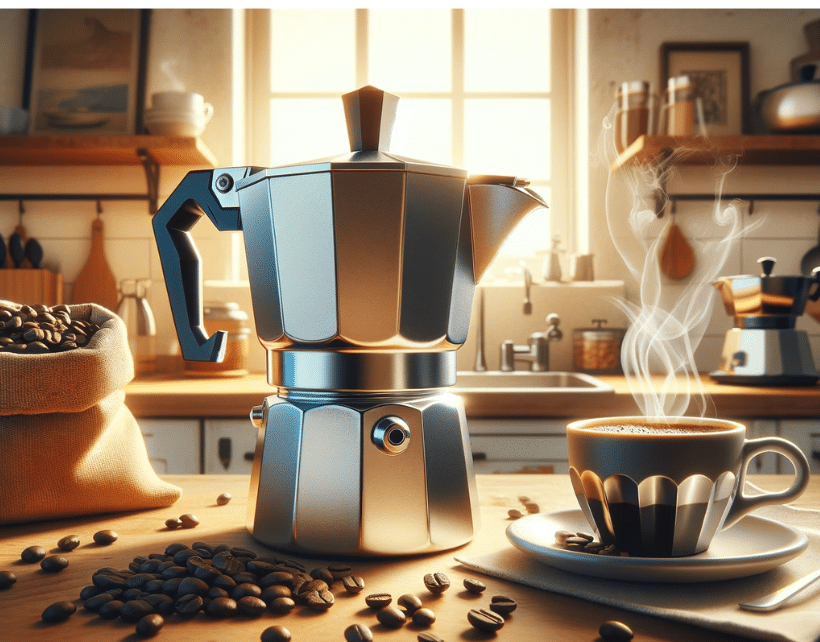
How to Use a Stovetop Coffee Maker
Brewing Coffee Like a Barista – How to Use a Stovetop Coffee Maker
When it comes to brewing the perfect cup of java, a stovetop coffee maker can be your secret weapon. When operated with expertise, this coffee-making tool can turn average joe into café quality joe! Get your barista apron ready, it’s time to enter the world of stovetop coffee brewing.
Key Takeaways
- Understanding the stovetop coffee maker anatomy is key to using it correctly.
- Follow the step-by-step guide to achieve a perfect brew.
- Avoid common mistakes to improve your coffee-making expertise.
- Adopt a proper maintenance approach to ensure the longevity of your stovetop coffee maker.
Understanding Your Stovetop Coffee Maker: Anatomy and Functions
Before diving into the brewing process, let’s take a closer look at the anatomy of a stovetop coffee maker. Typically, it consists of three compartments:
- Bottom Chamber (Boiler): This part holds water and also serves as the ‘heating hub’.
- Filter Basket: It holds coffee grounds and acts as a capsule for the brewing magic to happen.
- Top Chamber (Coffee Collector): After brewing, the coffee moves upwards into this chamber, ready for pouring.
Step-by-Step Guide on Using a Stovetop Coffee Maker
Let us walk you through the process of making a delicious espresso-like coffee at home.
- Fill the bottom chamber: Fill it with cold water up to the safety valve. Do not cover it!
- Add coffee to the filter: No need for paper filters! Add finely ground coffee to the filter basket. Don’t tamp it down; instead, level it off gently.
- Assemble the pot: Screw the bottom and top chambers together. Remember not to screw it too tightly; hand tight is perfect!
- Place it on the stove: Fire up your stove and place the coffee maker on it. Opt for a medium heat.
- Wait for the magic: As the water heats up, it will move up through the coffee grounds, and the fresh coffee will pour into the top chamber.
- Remove from heat: As soon as you hear a gurgling sound or see that the coffee has stopped climbing, remove the coffeemaker from the heat.
Voila! Your homemade espresso is ready.
Pro Tips and Techniques for Achieving the Perfect Brew
We’ve got some tricks up our sleeve to help coffee lovers like you. Try these out to get the most out of your coffee.
- Use fresh coffee: Coffee is best when it’s fresh, so grind your beans right before brewing if possible.
- Cool the base: After removing your pot from the heat source, cool the base with a wet towel. This will prevent over-extraction and bitterness.
- Experiment with grind size: Although medium-fine grind is ideal, feel free to experiment with the grind size to suit your taste.
Common Mistakes to Avoid When Using a Stovetop Coffee Maker
Stovetop brewing is an art, and like any art form, mistakes can occur. Let’s take a peek at what to avoid.
- Avoid pressing down the coffee grounds too firmly in the filter basket; you’re brewing coffee, not constructing a sandcastle!
- Ditch the idea of blasting the heat – slow and steady wins the coffee race.
- Remember, loosely screwing the coffee maker together minimizes the risk of damaging the rubber seal.
Care and Maintenance: Ensuring Longevity of Your Stovetop Coffee Maker
With proper care and maintenance, your stovetop coffee maker can serve brew after brew, year after year. Here are some practical tips from our Catering & Kitchen experts.
- Avoid washing with detergent. It can cling to the coffee oils and affect the flavor. Instead, rinse with warm water and leave out to air-dry.
- Disassemble and clean each part, paying attention to the filter plate where oils can build up.
- Replace the rubber seal and safety valve periodically. They can wear out over time, affecting the brewing process.
Conclusion: The Art of Coffee Making: Mastering Your Stovetop Coffee Maker
Now you’re ready to brew barista-standard coffee with your stovetop coffee maker! Pair your warm brew with our chilled iced coffee for a rounded coffee experience. With patience, practice and persistence, you can master this brewing technique, and impress family and friends with your coffee making skills. Because, after all, a good cup of coffee isn’t simply a beverage, it’s an experience.











